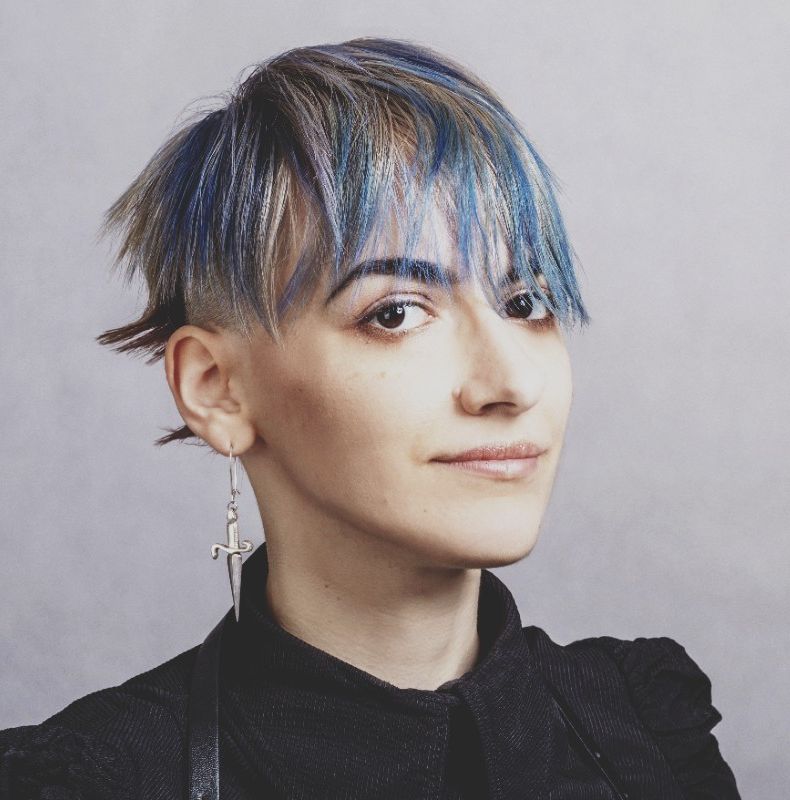How to Write a Graphic Design Cover Letter (With Examples)
Here’s how to write a creative and personalized graphic design cover letter in a matter of minutes.
Your graphic design cover letter gives you a unique opportunity to go into more detail about your expertise and experience. Use the examples below and follow our detailed guides to dazzle recruiters and stand out from the crowd!
CONTENTS
1. Examples of Graphic Design Cover Letters
2. What to Put in a Graphic Design Cover Letter
3. How to Write a Graphic Design Cover Letter: Do's and Don'ts

Examples of Graphic Design Cover Letters
Junior cover letter example
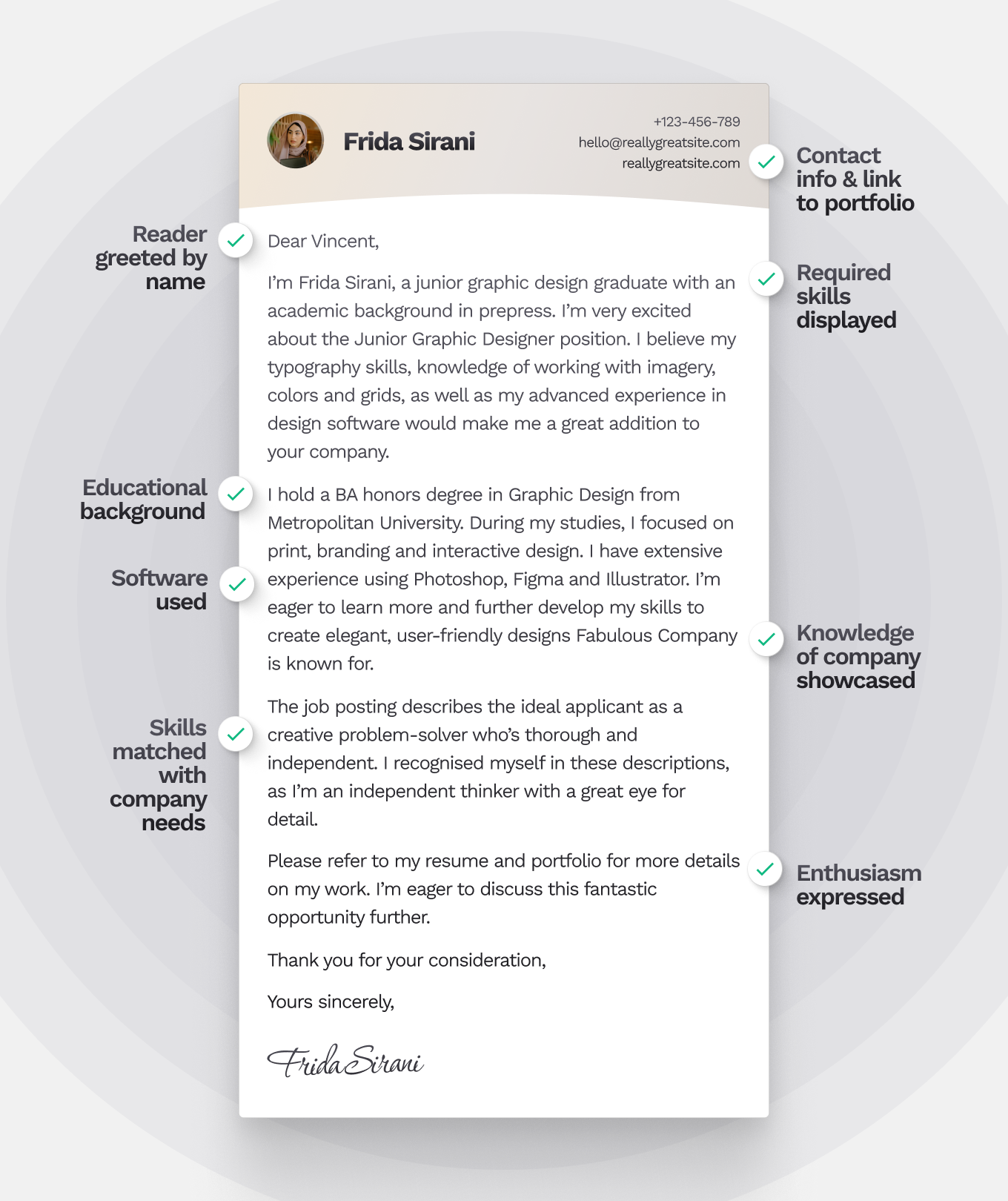
Dear Hiring Manager,
I’m Frida Sirani, a junior graphic design graduate with an academic background in prepress. I’m very excited about the Junior Graphic Designer position. I believe my typography skills, knowledge of working with imagery, colors and grids, as well as my advanced experience in design software would make me a great addition to your company.
I hold a BA honors degree in Graphic Design from Metropolitan University. During my studies, I focused on print, branding and interactive design. I have extensive experience using Photoshop, Figma and Illustrator. I’m eager to learn more and further develop my skills to create elegant, user-friendly designs Fabulous Company is known for.
The job posting describes the ideal applicant as a creative problem-solver who’s thorough and independent. I recognised myself in these descriptions, as I’m an independent thinker with a great eye for detail.
Please refer to my resume and portfolio for more details on my work. I’m eager to discuss this fantastic opportunity further.
Thank you for your consideration,
Yours sincerely,
Frida Sirani
Senior cover letter example
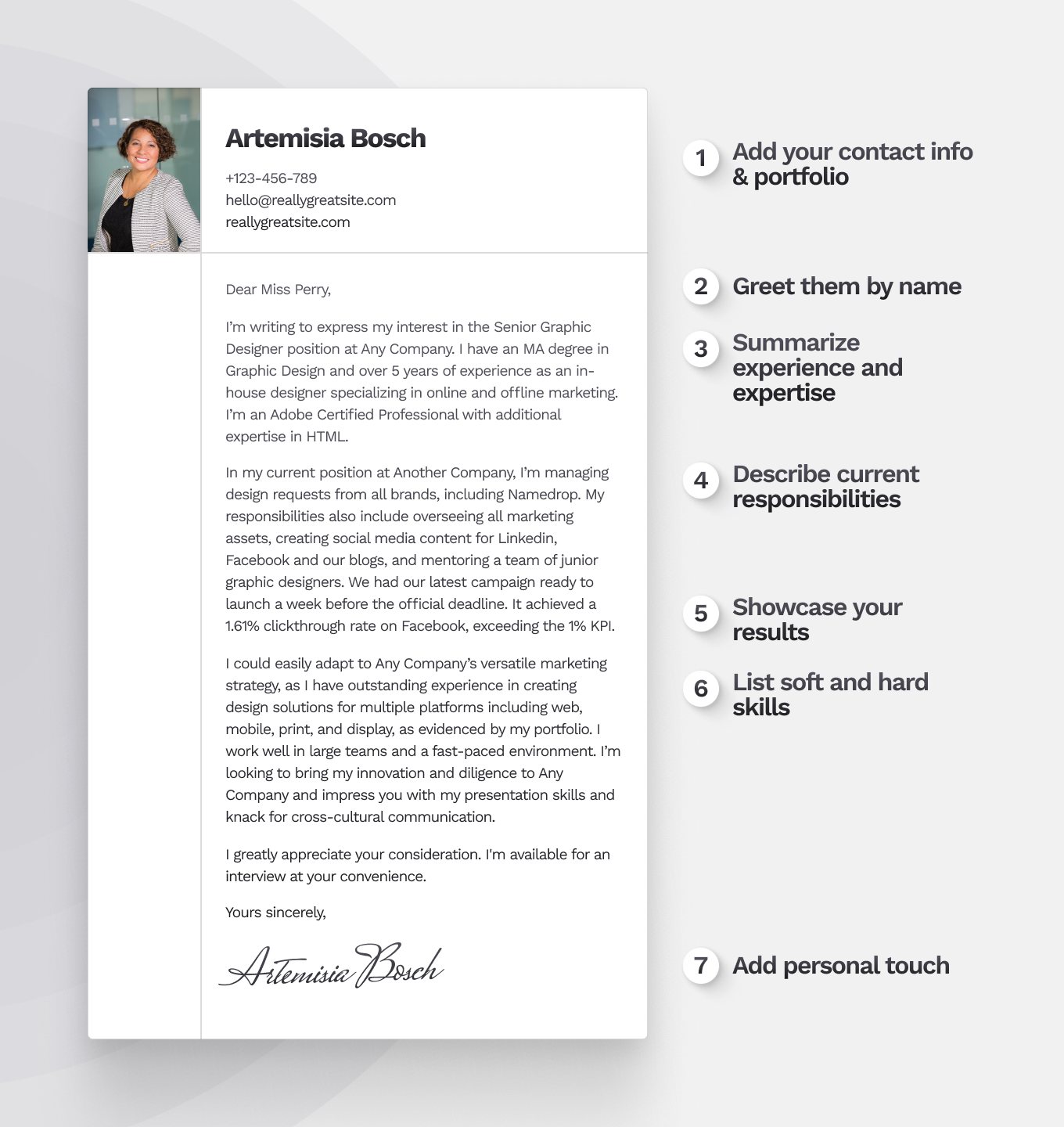
Dear Hiring Manager,
I’m writing to express my interest in the Senior Graphic Designer position at Any Company. I have an MA degree in Graphic Design and over 5 years of experience as an in-house designer specializing in online and offline marketing. I’m an Adobe Certified Professional with additional expertise in HTML.
In my current position at Another Company, I’m managing design requests from all brands, including Namedrop. My responsibilities also include overseeing all marketing assets, creating social media content for Linkedin, Facebook and our blogs, and mentoring a team of junior graphic designers. We had our latest campaign ready to launch a week before the official deadline. It achieved a 1.61% clickthrough rate on Facebook, exceeding the 1% KPI.
I could easily adapt to Any Company’s versatile marketing strategy, as I have outstanding experience in creating design solutions for multiple platforms including web, mobile, print, and display, as evidenced by my portfolio. I work well in large teams and a fast-paced environment. I’m looking to bring my innovation and diligence to Any Company and impress you with my presentation skills and knack for cross-cultural communication.
I greatly appreciate your consideration. I'm available for an interview at your convenience.
Yours sincerely,
Artemisia Bosch

Remember to customize
Copy-pasting examples is definitely the fastest way to create a cover letter, but is it the best practice? Hiring managers will likely notice that you tried to save time and handed in a re-written sample you found online. Read on to learn how to truly personalize your cover letter.
What to Put in a Graphic Design Cover Letter
Your cover letter is an addition to your resume and portfolio. However, you never know which one a recruiter will read first, or even if the same person handles all files. For this reason, you need to include the following 10 bits of information:
1. Name and contact information
Your name and contact information should be in the header, on the top corner of the page. Photos are not necessary, unless specifically requested.
2. Portfolio link
Include a link to your portfolio, preferably also in the header. Building your own graphic design portfolio website saves you the trouble of three-lines long awkward file sharing links.
3. Professional background
Go over the basics: the name and type of the companies you worked at (agency, startup, corporate) with their specific field of industry (marketing, gaming, education, etc). If you don’t have work experience, focus on the next step.
4. Educational background
Mention the type of degree you hold (if any) and additional courses or qualifications you may have. Scholarships, awards and exhibitions also deserve a mention!
5. Graphic design skills
Include the specific types of designs you create which are relevant to the position, from web design to logos and packaging. Try to limit yourself to a maximum of five mentions, so you come across more focused.
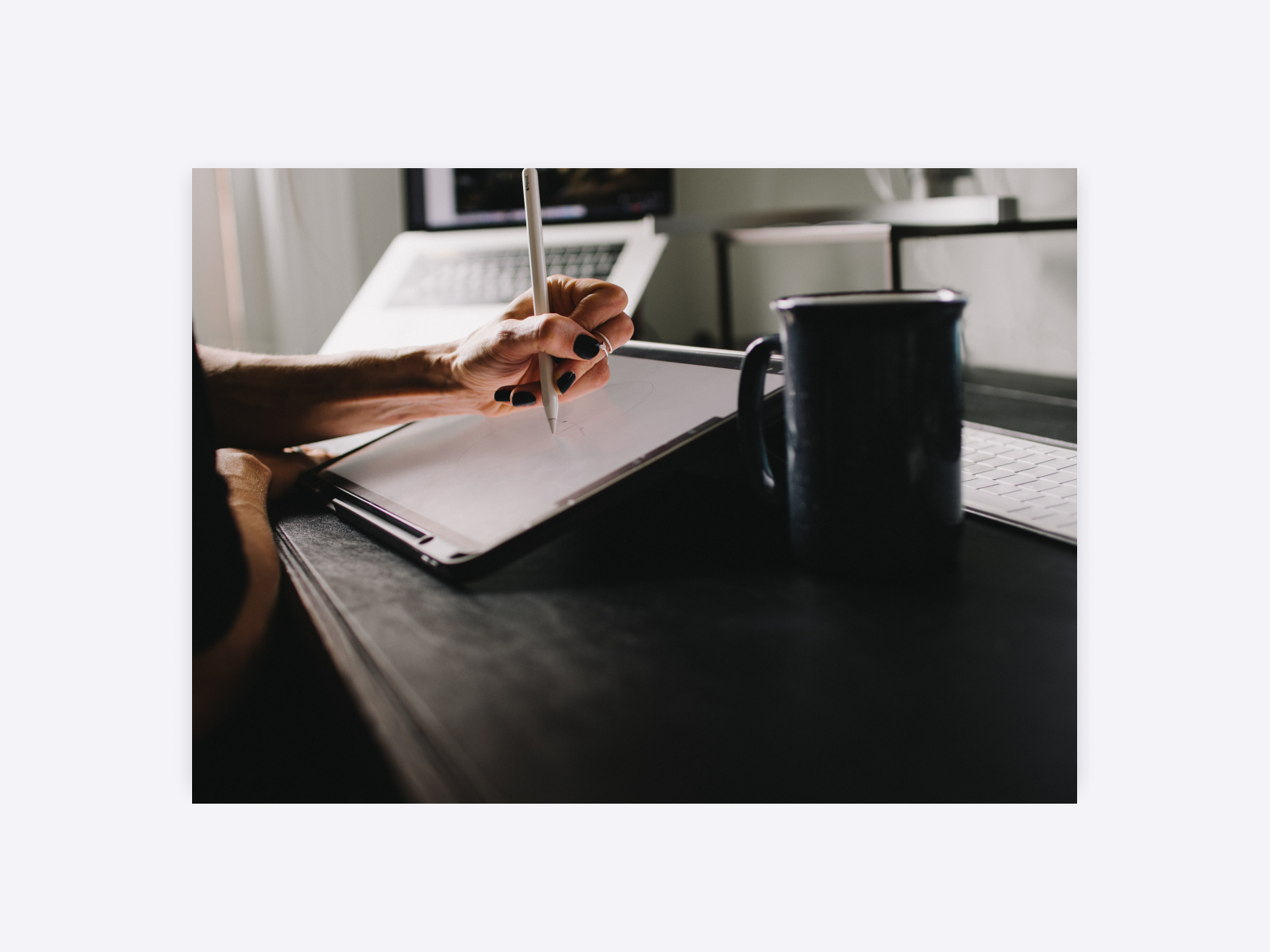
6. Main software used
Mention software you commonly use at a professional level. Save the full list for your CV: focus on the most relevant ones. If traditional art is a great part of your designs, itemize the main techniques you use.
7. Soft skills
List your soft skills: communication, creative problem solving, teamwork, networking, leadership, attention to detail… you know the drill. Avoid being generic and hunt for clues in the job description. They usually disclose desirable qualities. You may also want to mention coding experience or languages you speak if it’s relevant to the job; otherwise, save it for your CV.
8. Attention to detail
Prove that you read the job posting carefully (or, ideally, done additional research on the company) and mention a specific detail. For example, if they mainly have clients from the tech sector, highlight that you’re just the guy they want thanks to your tech-savvy background.
9. Success stories
Your success stories are the highlight of your cover letter. The more specific, the better. Bring numbers and statistics, or focus on great feedback you received.
10. Campaign descriptions
If you worked on campaigns, mention what type of campaigns they were: product launches, social media campaigns, SEO marketing campaigns and the like all count.
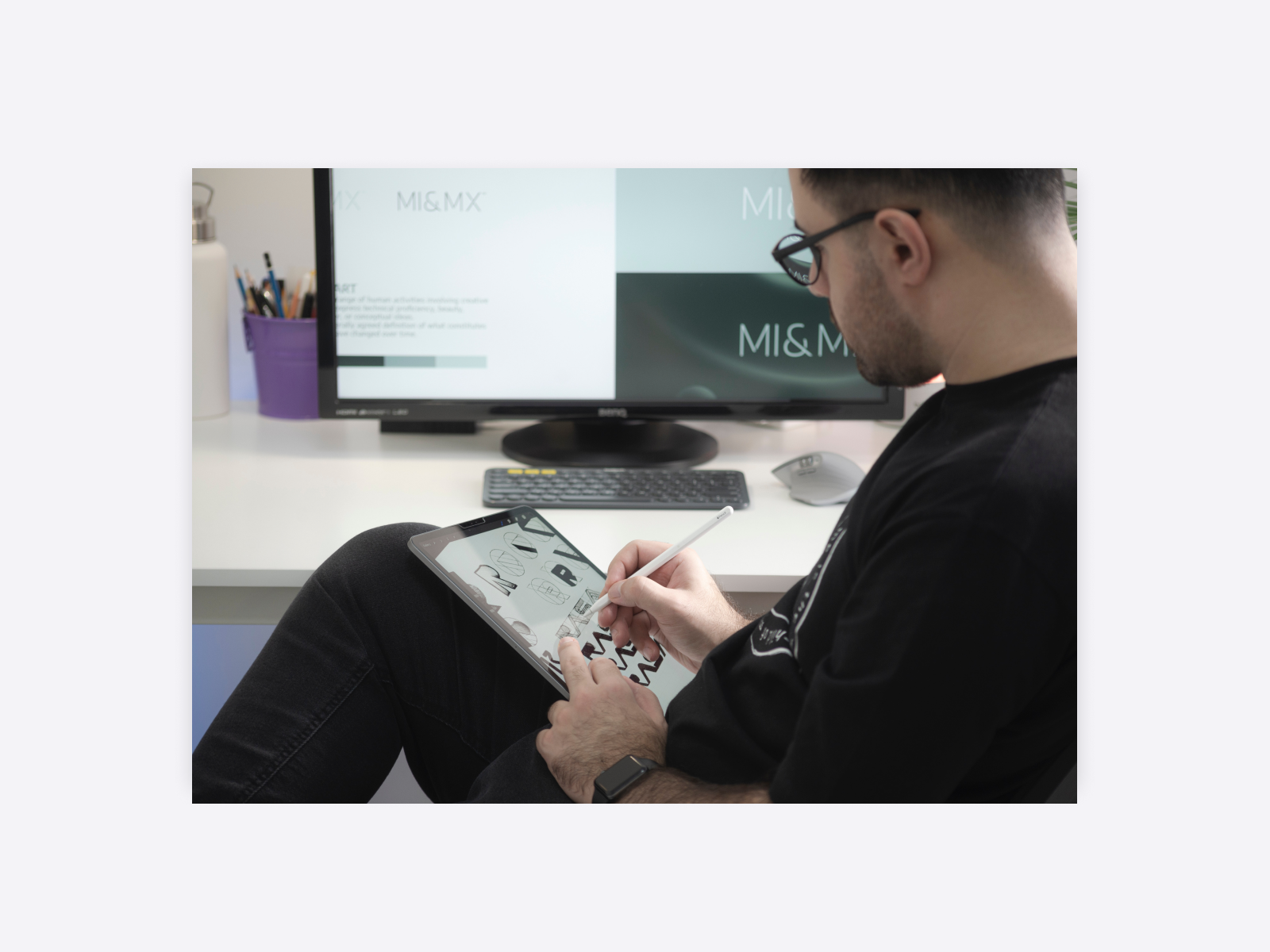
Writing a cover letter can be nerve-wracking. We’re taught to be humble, so writing a sales pitch for yourself may feel weird.
Don’t be afraid to brag here: everybody else does it. Follow the guidelines below to write a cover letter in a matter of minutes without overthinking it.
How to Write a Graphic Design Cover Letter: Do’s and Don’ts
Greetings
Do
Your cover letter should follow the general principles of letter writing. You need to greet the hiring manager, preferably by name; if you cannot find their name, address it to the company.
You should finish your cover letter thanking them for their time. Tell them that you’re excited for a response, then sign your name as you would an email.
Don’t
Rules are meant to be broken…except when it comes to politeness. Foregoing the above steps will leave a bad impression.
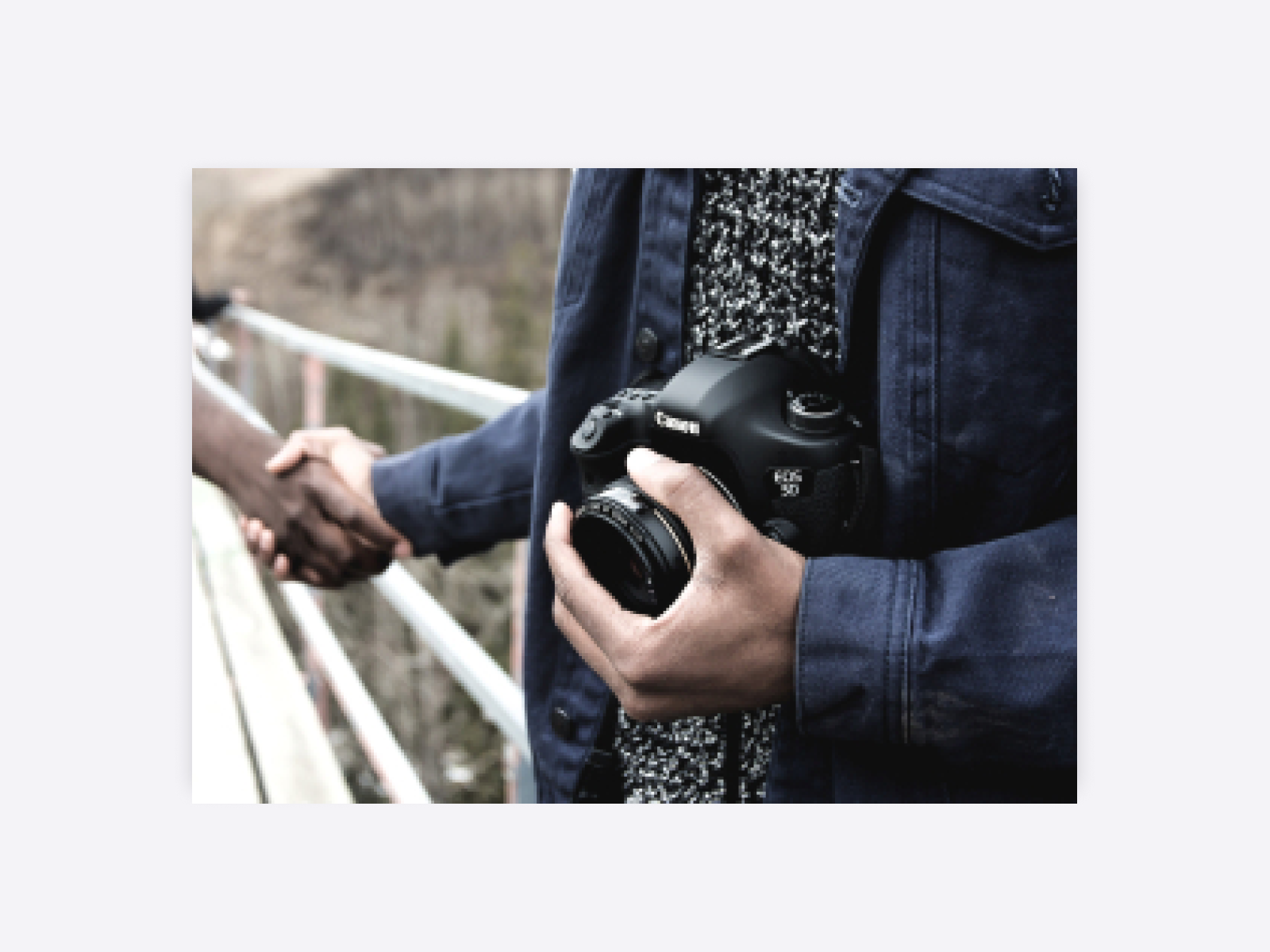
Structure
Do
The Way Factory suggests following a me-you-we structure.
- First, talk about yourself, including your background, accomplishments and soft/hard skills.
- Then talk about the job posting: what interests you in the company and the specific role.
- Finally, talk in detail about why you’re a good fit, both professionally and personally. Your connection to the company’s mission, philosophy, or specific expertise might deserve a mention.
We suggest bolding out the most relevant and impressive details. Think of your cover letter as a treasure map, and guide the recruiter’s eyes through the highlights.
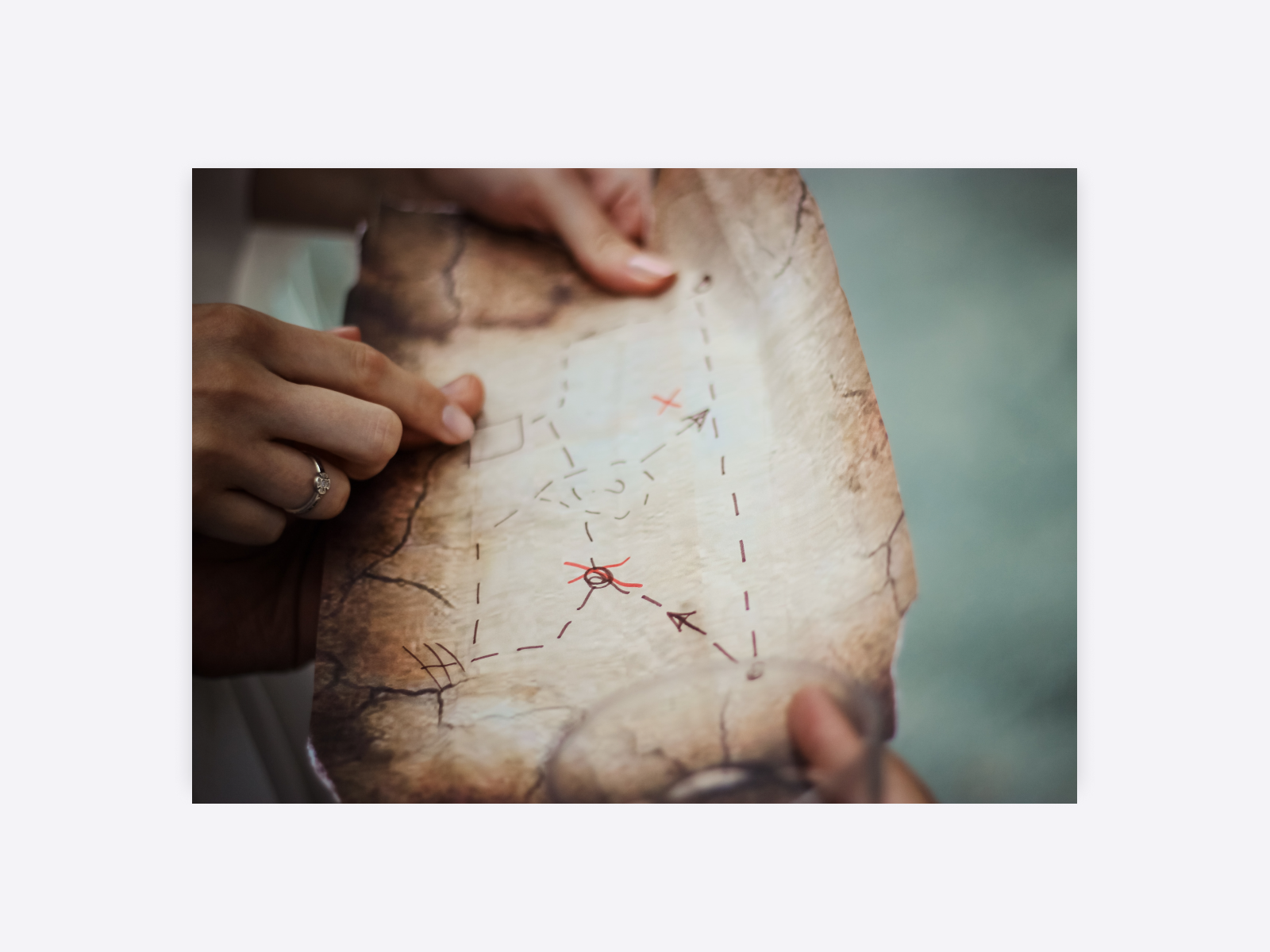
Don’t
Never sacrifice readability to structure. Each sentence should logically follow from the next, so if you need to spoiler a bit, go for it.
Length
Do
Your cover letter should be about 4-5 paragraphs long. Your goal is to fill an A4 page. You can totally cheat with spacing.
Don’t
If you run out of things to say, keep it short and sweet. A concise cover letter is better than a ramble.
Customization
Do
The rule of thumb is to make your cover letter not just about you, but sound like you.
A useful exercise is to read the draft out loud, then put it aside and try to summarise what you’ve just said in your own words. Make a recording if necessary, then pepper in your own phrases. It will only take five minutes, but will improve your cover letter even if writing skills are not your forte.
Cover letters are generally a bit more laid back than a CV, but they should still be professional. We’re recommending a business casual style, like an email you’d write.

Don’t
If you use a sample, such as the samples above, make sure to adopt them to your unique style and personality. Recruiters at large corporations read hundreds of cover letters: they’ll notice a copy-pasted text.
That being said, all cover letters follow a general format with similar phrasing, so there’s no need to reinvent the wheel.
Design
Do
Incorporate your graphic design skills. Whether you use this opportunity to show your personal style or prove how well you can adapt to a brand’s identity is up to you. More corporate-leaning companies tend to appreciate the latter, while companies with a strong focus on design will expect you to show your colours.
Don’t
Just don’t go overboard. Readability is more important than design. Gray letters look chic on a white background, but the recruiter may have an old monitor or a black-and-white printer. Prepare for the worst and make sure your design is adaptable and looks good even in suboptimal circumstances.
Format
Do
Follow the company’s guidelines. If they request a .docx document, they do it for a reason–the recruiter may want to be able to copy or edit the text.
No guidelines? No problem. PDFs are generally favoured.
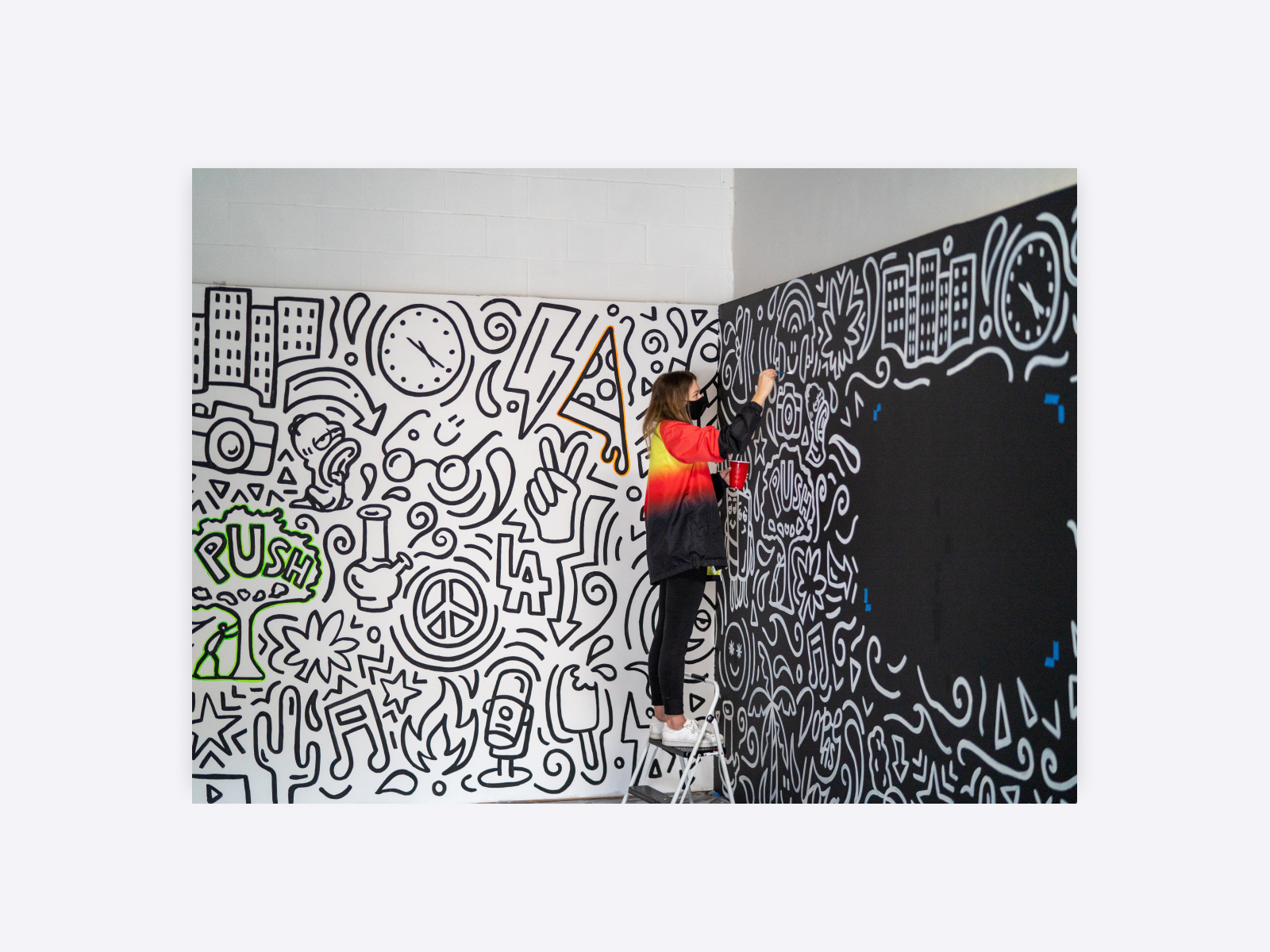
Don’t
No weird formats either: your recruiter will likely not be able to open a .PSD file. Use basic software and compress if necessary. The file size should be reasonable.
Your Takeaway
Writing a cover letter can seem like an overwhelming task. The trick is that you get better with practice. Using the how-to guide and the examples above you can learn how to write a cover letter that responds to the job positions and highlights how exactly you fit into the company. You’ll get used to personalising your cover letter in no time.
After landing a position, don’t forget to keep your draft. Cover letters are great not just for job applications, but for seeking promotions or changing career paths, too.
You can read about how to become an art director on our blog, or subscribe to our newsletter for more career tips.
